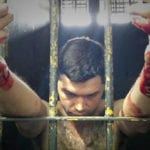 Music
Music  Music
Music  History
History 10 Less Than Jolly Events That Occurred on December 25
 Weird Stuff
Weird Stuff 10 Funny Ways That Researchers Overthink Christmas
 Politics
Politics 10 Political Scandals That Sent Crowds Into the Streets
 Weird Stuff
Weird Stuff Ten Bizarre Facts About The Doge Meme
 Our World
Our World 10 Ways Your Christmas Tree Is More Lit Than You Think
 Movies and TV
Movies and TV The 10 Coolest Stars to Set Sail on The Love Boat
 History
History 10 Things You Didn’t Know About the American National Anthem
 Technology
Technology Top 10 Everyday Tech Buzzwords That Hide a Darker Past
 Humans
Humans 10 Everyday Human Behaviors That Are Actually Survival Instincts
 Music
Music 10 Surprising Origin Stories of Your Favorite Holiday Songs
 History
History 10 Less Than Jolly Events That Occurred on December 25
 Weird Stuff
Weird Stuff 10 Funny Ways That Researchers Overthink Christmas
Who's Behind Listverse?

Jamie Frater
Head Editor
Jamie founded Listverse due to an insatiable desire to share fascinating, obscure, and bizarre facts. He has been a guest speaker on numerous national radio and television stations and is a five time published author.
More About Us Politics
Politics 10 Political Scandals That Sent Crowds Into the Streets
 Weird Stuff
Weird Stuff Ten Bizarre Facts About The Doge Meme
 Our World
Our World 10 Ways Your Christmas Tree Is More Lit Than You Think
 Movies and TV
Movies and TV The 10 Coolest Stars to Set Sail on The Love Boat
 History
History 10 Things You Didn’t Know About the American National Anthem
 Technology
Technology Top 10 Everyday Tech Buzzwords That Hide a Darker Past
 Humans
Humans 10 Everyday Human Behaviors That Are Actually Survival Instincts
10 Murderous Priests, Pastors, And Nuns
Religion has been used to justify a whole host of violent atrocities throughout history, and there are religious leaders who have been directly or indirectly responsible for countless deaths. Many of them thought they were doing God’s work. The people on this list are different because they didn’t take a life in the name of God; they did it because they wanted to. They committed their lives to serve God and knew they were committing a sin against Him but still went through with their deadly plans.
10 Thomas Kottur, Jose Puthurukkayil, And Sister Sephy
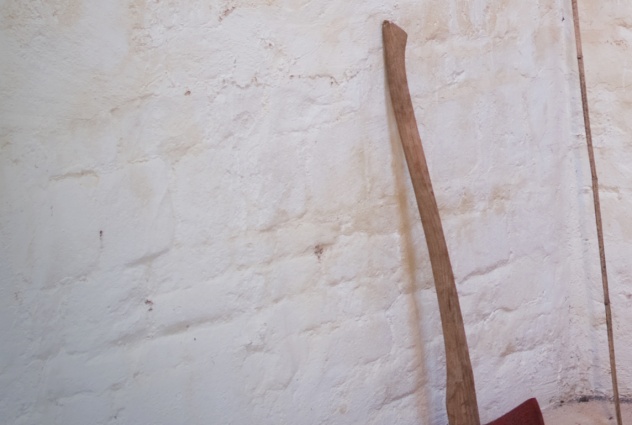
On March 27, 1992, Sister Abhaya awoke at 4:00 AM to begin her studies at the St. Pius X convent in Kottayam, India. Before starting for the day, the 19-year-old Knanaya Catholic nun went to the kitchen to get a glass of water. The next person to come to the kitchen found the refrigerator door open. There was a bottle of spilled water, there was a slipper under the fridge, and Sister Abhaya was missing. After a short search, her body was found in the convent’s well.
At first, her death was ruled a suicide, despite there being a number of cuts and abrasions on her body. The case remained closed until almost 16 years later. The nuns at the convent had sent a petition to India’s police agency, the Central Bureau of Investigation (CBI), asking them to reopen the case, which they did in 2007.
During their investigation, the CBI interviewed three individuals who lived at the convent—Father Jose Puthurukkayil, Father Thomas M. Kottur, and Sister Sephy. The CBI gave all three a Narco Analysis, which is a truth serum test. Under the influence of the serum, the three confessed to the murder. Apparently, Sister Abhaya caught the three of them in a compromising sexual position. Sephy panicked and struck Sister Abhaya three times with the blunt side of an ax. The three of them then dumped the body in the well.
Puthurukkayil, Kottur, and Sephy were arrested but were released on bail. They have yet to go to trial because of how the evidence was handled. Much of it was destroyed.
9 David Love
David Love, pastor of the New Hope Baptist Church in Independence, Missouri, was a friend and trusted confidant of former Marine Randy Stone. When Stone was having marital problems with his wife, Teresa, he would talk to Pastor Love about it, looking for guidance. Love, who was also married, never let on that he and Teresa had been having an affair for 10 years.
On March 10, 2011, Teresa found Randy shot to death with his own gun in his office. A funeral was held a few days later, and his friend and pastor David Love gave part of his eulogy. Shortly after his murder, Love moved to South Carolina, but the police soon found out about the affair and arrested him and Teresa. Teresa confessed that she had given Love the combination to her husband’s safe, where he kept his gun. The plan was to murder him and collect the insurance money.
Love pleaded guilty and was given a life sentence. Teresa also pleaded guilty and received a sentence of eight years in prison.
8 Mike Tabb

In 2002, former Navy chaplain Mike Tabb and his young family had just moved to the tiny town of Troup, Texas, because he had been hired as the minister for the town’s Methodist church. Tabb’s wife, 35-year-old Marla, had given birth to the couple’s second child six weeks prior to moving to Troup.
On August 5, 2002, Tabb called the sheriff’s department in a panic. His wife had been severely beaten in their house, which was located behind the church. When the police arrived, they found Marla lying in a pool of blood. She had been so severely bludgeoned that her jaw was shattered and her face was unrecognizable. There had been a struggle, and a table was missing two of its legs. One of the legs was never found; it is thought to have been the murder weapon. One odd thing the police noticed was that the crime scene looked like it had been cleaned up a bit.
The police took Tabb’s clothes and found traces of blood on his shoes and in his truck, which led to him being arrested a short time later. On September 29, 2003, Tabb pleaded guilty to the murder of his wife. It was decided that his motives would not be revealed in court for the benefit of Tabb’s two children, although it was suspected that Tabb was leading a double life and that there were problems in his marriage. Tabb was sentenced to 55 years in prison, though he will be eligible for parole after serving 27 years.
7 John David Terry
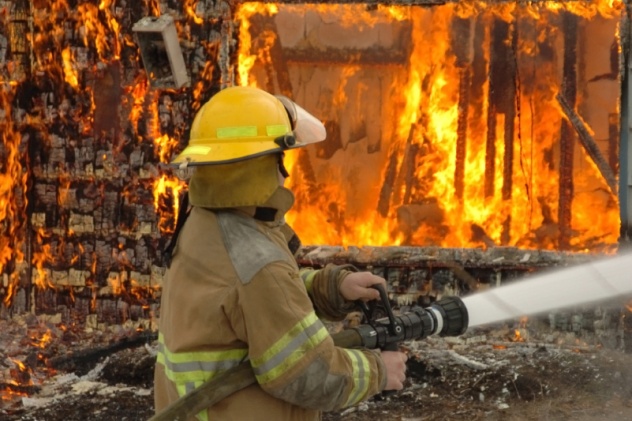
In the spring of 1987, Reverend John David Terry, a Nashville-based Oneness Pentecostal minister, felt like he was failing in life. He had been expecting to step into the role of bishop, but the current bishop wasn’t planning on stepping down. Another problem was that he had stolen $30,000 of the church’s money. Wanting to start over, Terry hatched a brutal and gruesome plan to start a new life and leave his family with some money.
On June 16, 1987, Terry lured 32-year-old church handyman James Matheney into the church’s attic. There, Terry shot him in the back of the head. Once his victim was dead, Terry stripped him and then put his own clothes on the dead man. Then, using a hacksaw and a knife, he cut off Matheney’s head, part of his arm, and a piece of skin that had tattoos on it. After mutilating the body, Terry rolled Matheney’s remains up in a rug and set the church on fire.
Terry hoped Matheney’s body would be mistaken for his own. Besides the body, he set up clues, including fingerprints using Matheney’s dismembered hand, to make it look like Matheney was the murderer, and he was the victim. However, the fire was put out before the body was too badly damaged, and the medical examiner was able to determine that it wasn’t Terry’s.
Two days after the murder, Terry turned himself in. He was tried and given a death sentence, but that conviction was overturned. He was given a new trial, where he was again found guilty and again sentenced to death. On March 14, 2003, Terry hanged himself in his death row cell. He was 58 years old.
6 Leticia Lopez
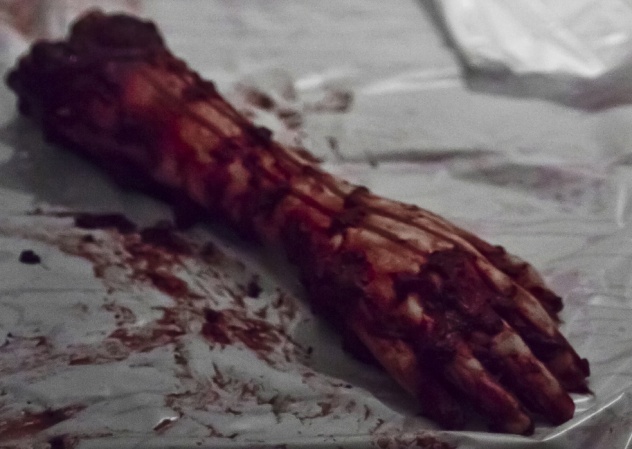
Sister Luz Amparo Granada was a popular nun who lived and worked in a high-risk area of Bogota, Colombia. She was well-known in the area because for her red hair and blue eyes and for her work with prostitutes and other people who lived on the streets.
Sadly, in November 1999, the 30-year-old nun’s badly burned and dismembered body was found on the side of a road. Sister Granada had been shot in the head. Working in a high-risk area, she could have been killed by a number of people, but suspicion soon fell on a fellow nun who lived next door Granada, Sister Leticia Lopez. Lopez denied any knowledge of the murder and was acquitted when she went to trial.
After the trial, the authorities asked the FBI for help. When the FBI stepped in, they discovered that the walls of Lopez’s room had traces of blood, and there was a trail of blood which indicated that a body had been dragged from the room.
Lopez was rearrested, and this time, she was convicted and given 14 years in prison. It’s believed that she disapproved of Granada‘s work with women in the sex trade and their children. It’s also believed that Lopez may have been involved with a group of vigilantes who were killing prostitutes and drug addicts. At least 21 prostitutes had been murdered in the area in the last two years. However, Lopez has denounced the murders and has never mentioned being part of any vigilante group.
5 John Nelson Canning
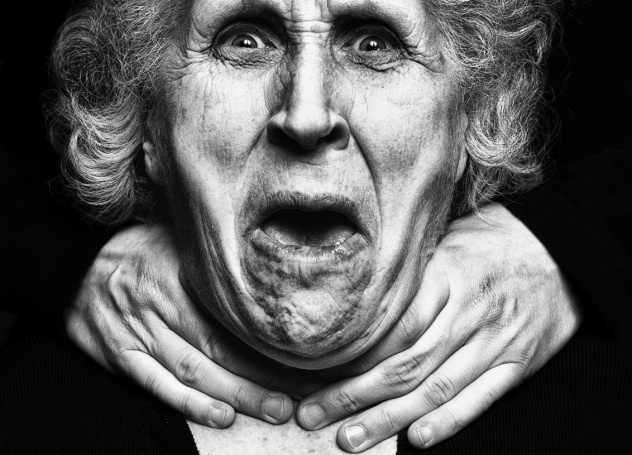
John Nelson Canning, a Pentecostal minister from Saco, Maine, moved to Sebring, Florida, sometime in the mid-1980s. He was forced to move because he was accused of embezzling funds. While in Sebring, he became the minister of a nondenominational church called the Fountain of Life Church, which had about 50 members.
Two of the founding members, Leo and Hazel Gleese, were married in the church in 1988 by Canning. The couple was in their early 80s when they married. In 1994, the couple’s health started to fail, and Canning promised to take care of them and check in on them every day. In turn, they gave him power of attorney. That’s when Canning started to abuse his position. He began to embezzle money from the couple and even sold one of their houses. In late 1994, Hazel realized that tens of thousands of dollars were missing from their account, and she confronted Canning.
To silence the 90-year-olds, Canning entered into the elderly couple’s home On January 2, 1995, and he beat and choked them both to death. Afterward, he went out to dinner with friends and spent the day at the beach. Upon returning from his day, he reported the deaths to the police, saying he’d found them the day before, which immediately made police suspicious.
Before he was arrested, Canning gave a 30-minute eulogy for the couple, saying that he was so close to the couple that he could call them “mom and dad.” He was arrested a short time later and pleaded guilty to first degree murder. He was given a life sentence in 1996.
4 Hans Schmidt

Born in 1881 in Germany, Hans Schmidt moved to the United States after becoming an ordained Catholic priest in 1909. Stateside, he bounced around a bit before ending up at St. Boniface Church in New York City. There, he met Anna Aumuller, a recent immigrant from Austria who was the housekeeper at his rectory. At some point, Schmidt and Aumuller entered into a sexual relationship, even going as far to “marry” one another in a secret ceremony. Then, Schmidt was transferred to another church that was in the city but quite a distance away from where Aumuller lived and worked. Despite their separation, the couple continued on with their relationship.
Trouble began when Aumuller got pregnant, quite possibly for the second time because it was suspected that she’d already had one abortion. This would have been incredibly scandalous for the young priest and could have led to him being defrocked. So instead of just coming clean and hoping for the mercy of the Church, he decided to break one of the its holiest commandments. On September 2, 1913, Schmidt slit Aumuller’s throat. Once she was dead, he dismembered her body and threw the pieces into the East River.
After Aumuller’s body was discovered, Schmidt was arrested, and his case instantly became a media circus. At his first trial, he pleaded insanity, which led to a hung jury. At his second trial, he was found guilty and condemned to death. He was executed via electric chair on February 18, 1916, at Sing Sing Prison. Schmidt is the only priest to ever be executed by the United States government for murder.
3 Gerald Robinson
On the day before Easter Sunday 1980, Sister Margaret Ann Pahl, a 71-year-old Catholic nun, was found brutally murdered on the floor of the chapel at the Toledo Mercy Hospital. Pahl, who was the chapel’s caretaker, had 31 oddly shaped stab wounds on her face, neck, and chest. Nine of the stab wounds over her heart appeared to form an inverted cross. The weapon wasn’t found at the scene, but it appeared to have been a small saber. Her arms were crossed, and she was wrapped in the altar cloth. Finally, there was blood smeared on her forehead, making it look like someone mockingly performed the Last Rites on her.
An early suspect in the blasphemous murder was Father Gerald Robinson, the chapel’s priest. Two weeks after the murder, Robinson, who presided over Pahl’s funeral, was brought to the police station for questioning. But as he was being interviewed, an odd thing happened: One of the diocese’s monsignors walked in, stopped the interview, and walked Robinson out of the building.
With no other suspects, the murder of Sister Pahl remained cold for 23 years. The case was given new life in 2003, when the police received a letter from a woman who was only identified as “Survivor Doe.” In her letter, Doe said that she had been sexually abused by a priest and people dressed like nuns in satanic rituals. Survivor Doe even said that some of these rituals involved human sacrifices. She also identified the priest involved with these satanic rituals as Father Gerald Robinson.
With these new allegations, police began to look into Robinson, and they were able to search his office. There, they found a letter opener shaped like a small saber. The police had Pahl’s body exhumed, and it was determined that the letter opener was the murder weapon. That evidence, coupled with three witnesses putting Robinson in the area at the time of the murder, led to him being arrested for first-degree murder.
At his trial, prosecutors argued that Robinson stabbed Pahl to death because he thought she was overbearing. The breaking point came when she criticized the Good Friday service he had presided over the day before the murder. Robinson was convicted in May 2006, making his actions the only known recorded case of a Catholic priest killing a nun. He died in prison at the age of 76 in July 2014.
2 Ryan Erickson

Hudson, Wisconsin, is a small town with a population of just over 6,000 people. It was a quiet, peaceful place, until a scandalous double murder shocked the community.
On February 5, 2002, a gunman entered the O’Connell Funeral Home and shot and killed the funeral director, 39-year-old Daniel O’Connell, and his intern, 22-year-old James Ellison. Nothing was stolen, leaving the police without a possible motive as to why anyone would want to murder the two funeral home employees. Three years later, suspicion fell on the local Roman Catholic priest, 31-year-old Ryan Erickson. He even presided over the funeral of one of the murdered men.
After the murders, Erickson was transferred to two different churches within three years. In December 2015, the police interviewed him twice. After the second interview, Erickson put on his cassock and hanged himself, which is a serious sin in Catholicism. In his suicide note, Erickson denied killing anyone. Following his suicide, evidence was presented to a judge, who ruled that Erickson had, in fact, killed O’Connell and Ellison.
It turned out that from a young age, Erickson was attracted to other males and had led a troubled life. There are records of him being involved in sexual activities with other males, dating all the way back to when he was just six years old. When Erickson was 17, he was accused of sexual assault, but authorities decided to not press charges. Hudson police believe that Erickson murdered the two men because O’Connell was going to confront Erickson about a teenage boy whom Erickson had sexually abused.
1 Cecile Bombeek

Cecile Bombeek, also known as Sister Godfrida, was a nun with the Congregation of the Sisters of St. Joseph, which is a Roman Catholic congregation of nuns. In 1975, Bombeek, who lived in Ghent, Belgium, had brain surgery to remove a tumor. After the surgery, Bombeek’s personality changed, and she was plagued by constant, terrible headaches. She was prescribed medication for the pain and became addicted to morphine.
In 1977, Bombeek, who was 43 at the time, was working in a hospital. During her tenure, the hospital and other caretakers in the ward noticed that Bombeek’s unit had a higher death rate than average, so the nurses started to keep a journal. That is when they noticed that a high percentage of patients who died were last cared for by Bombeek. Bombeek had also developed a reputation for being cruel to patients. An example of that cruelty was roughly pulling out catheters.
In August 1977, Bombeek was in drug rehab for a third time for her profound morphine addiction. After being released, she wanted to come back to work at the hospital. Hospital officials obviously didn’t want her back, so they confronted her about the high death rates when she was around. That is when she confessed to killing three patients in July and August 1977. Her victims were between the ages of 75 and 80, and she killed them by giving them an overdose of insulin.
As for why Bombeek did it, she said that she killed them because they were “too difficult at night.” She also stole $30,000 from them, which she spent on morphine. There were also reports that Bombeek lived a lavish lifestyle with her roommate, who was also a nun. She also supposedly had an affair with her roommate and a retired priest.
Authorities are unsure how many people the drug-addicted, serial-killing nun truly killed, but in one year, 21 of 38 patients who were treated by Bombeek died. After being charged with murder, Bombeek was given a psychological exam and was deemed unfit to stand trial. She was committed to a psychiatric hospital.
Robert Grimminck is a Canadian freelance writer. You can friend him on Facebook, follow him on Twitter or on Pinterest, or visit his website.

